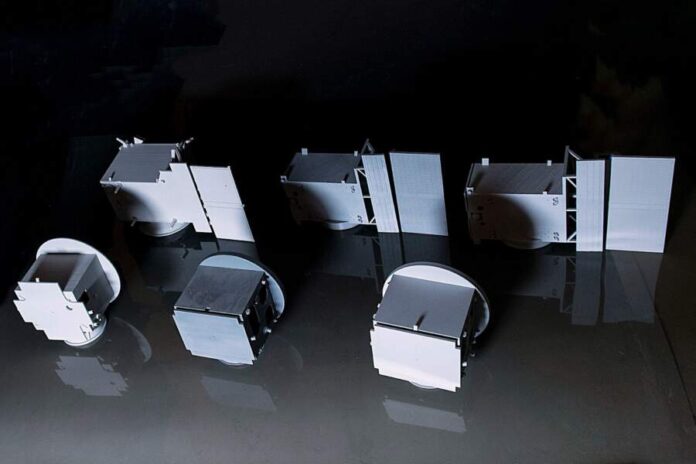The small satellite market keeps growing. In 2022, US’s small satellite market worth reached $5.6 billion, and by the end of this decade, this figure is expected to rise up to $12+ billion. At the same time, space tech is becoming ever more affordable — mostly thanks to small satellite platforms that are way more cost-effective in production, launch, and further maintenance. No doubt, some limitations while using satellite platforms persist, but advances in satellite platforms and sensors are very impressive. So, what is the future of satellite technology? Read on for more market projections below.
Satellite Platform Size Will Keep Growing Smaller
Today, small satellites and CubeSats are in the highest demand — mostly because the compact design of satellite platforms means lower production and launch cost. CubeSats, in particular, are most suited for mass production because they have standard, scalable sizes. This, in turn, means that a satellite platform system hosting these CubeSats in orbit can be scaled and mass-produced, too.
The launch cost for small satellites and corresponding platforms is lower, too. There are two ways to affordably launch payload to orbit — either as rideshare on a heavy rocket or as a dedicated launch on smaller carriers. The first option is more affordable but generally has a longer wait period. For example, SpaceX’s Falcon 9 record launch carried 143 smallsats to orbit at once. Besides, SpaceX’s delivery cost per kilo of the useful payload is also the lowest in today’s market. Still, while SpaceX is mostly focused on launching its own payloads, new providers emerge, offering competitive launch prices to both government and private clients worldwide.
Regardless of how clients launch their payloads — as rideshare or dedicated launch — the demand for small satellites and platforms keeps growing because of lower production costs and quicker timeframes.
Demand for High-Resolution Imagers Should Grow
Most of the launched satellites today are used either for communication or Earth Observation; both platforms are going through changes of their own as well. Most of these sat platforms are now located in LEO and depending on the spacecraft’s type and purpose, many are formed into constellations, ranging from several to thousands of devices. This trend for launching small satellites will keep growing because quality Earth observation requires high-resolution imagers with corresponding platforms. However, satellite platform microvibration often causes image distortion, and data from several platforms can solve this challenge. Plus, a larger network logically means more coverage; this principle applies to both communication and imaging space platforms.
EOS systems today observe a whole range of processes on Earth, and their data is widely applied in multiple industries, from transport and logistics to mining and construction. Other platforms are designed for environmental monitoring and alleviating the consequences of climate change. Obviously, there are also government clients interested in the military and defense sector — but regardless of the platform’s specific purpose, high-resolution imagery is a must, and the demand for quality imagers keeps growing steadily.
New Solutions Expected to be Found for Payload Accommodation
Right now, payload weight is the primary parameter influencing satellite launch cost. As satellites grow smaller, so does their accompanying equipment; so, we may soon expect some unification in spacecraft OS. What operating system do satellites use today? Mostly, Linux-based software, with minor variations depending on the satellite’s purpose, and it’s quite likely that the same OS will keep powering our space tech for some time.
Still, a spacecraft platform may hold way more equipment than onboard electronics, which also defines the final payload mass. While SmallSats and their platforms do not require as many complex, heavy mechanisms as their predecessors, most of them are still equipped with thrusters for adjusting orbit parameters and eventual descent once the spacecraft has served its purpose. The latter is done to address an ever-growing issue of space debris accumulating in our planet’s orbit, and even though necessary in the long term, thrusters with additional equipment increase platform weight. Private companies who must keep cost-effectiveness in mind are already working on this, so soon enough, we should see new advances in this niche.
Can Anything Interfere with Space Market Growth?
With all of this in mind, it is clear that the satellite platform market will keep evolving. Of course, the actual growth rate may differ depending on outside factors. For example, the COVID crisis did slow down space industry development in 2020. Next, in 2022, NASA and ESA abruptly severed ties with the Russian space agency after its military invasion of Ukraine. However, the demand for small satellites and corresponding platforms has not decreased, which means that the supply will keep growing, too.
Read Also : 5 Ways to Protect Your Child While They Are Online



































































